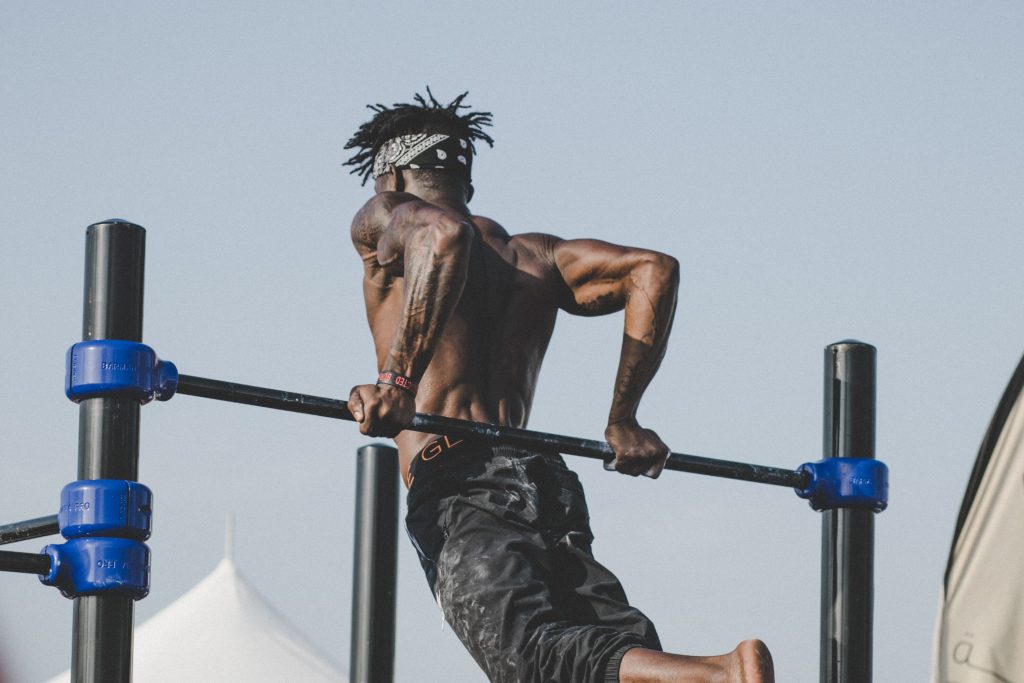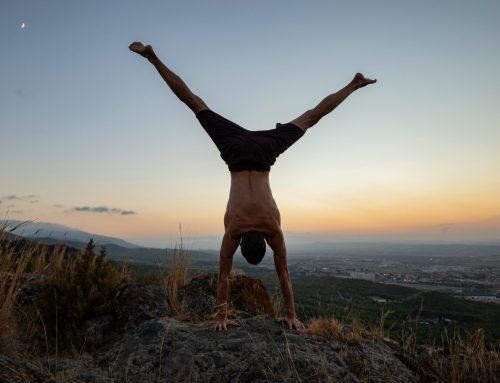
We use our capability to grip things every single day. Whether you are opening a door, shaking a friend’s hand, or opening a jar of pickles, we use grip to do these things.
Many people doing deadlifts, pull-ups, or push-ups don’t think about their hands but focus more on the bigger muscle groups. You should focus on proper form and the muscle you are training, so, lats if you do pull-ups and pecs if you do push-ups. But your hands are where everything starts.
Here are some advantages of developing and maintaining well-developed grip strength.
Improved performance:
- Whether you are a tennis player, calisthenics athlete, or bodybuilder, all these sports require powerful grip strength. It allows you to maintain better control over equipment and objects, leading to improved accuracy, power, and technique.
- You will be able to go harder for longer. You will have the power to hold that barbell for one more rep. With good grip strength, you will hold on to that pull-up bar a bit longer. Nobody likes to finish pull-ups by hanging with your fingertips from the bar.
- More advanced exercises. Solid grip strength allows you to do more advanced exercises. One of the most popular calisthenics exercises – handstand, requires you to balance with your wrists. Another example is one-arm pull-ups. One might think that this advanced exercise requires developed lats and biceps, and that is true. But, in reality, strong wrists and forearms will help you get that first one-arm pull-up.
Injury prevention:

Forearm Injury
- Improved grip strength can reduce strain on your joints. A developed grip can distribute the forces across your joints more evenly, reducing the risk of sprain and injury. Be aware of this during exercises involving heavy weight, like, deadlifts, overhand press, and farmer walks.
- Strong hand muscles and forearms provide better stability and control during exercises and activities that involve movement. Exercises like handstands require balance and poise. Condition your wrists, and you are halfway there to handstand.
- Developed grip strength will strengthen the tendons and ligaments in your hand. It will prevent injuries and make your wrists more resilient.
Worth mentioning
If you work out regularly, you probably have heard about at least one of these reasons why you should train your grip strength.
Here are some less-known reasons:
- According to the Institute of Cardiovascular and Medical Sciences, University of Glasgow, lower grip strength is associated with cardiovascular, respiratory, and cancer outcomes and all-cause mortality. Higher grip strength is associated with a lower risk of all causes of mortality and incidence of mortality from cardiovascular disease, respiratory disease, chronic obstructive pulmonary disease, and sub-types of cancer.
- According to the Department of Endocrinology and Metabolism, The First Hospital of Jilin University, grip strength is associated with cognitive performance, particularly for working memory and processing speed. Poorer grip strength is associated with more onset of cognitive decline and dementia, even subtypes of dementia. Early prevention of cognitive impairment may focus on better recognition and improvement of grip strength.
How to measure grip strength?
Now you may be interested in how grip strength is measured and what is good grip strength for men and women:
- You can measure your grip strength using a dynamometer – a device you hold in your palm and squeeze as hard as you can with your fingers. As you compress your palm, the dial displays the force generated by your palm in kilograms, just like when you step onto a set of scales. Your grip strength is the highest force reached in a single squeeze.
- You can measure grip strength using pounds, kilograms, or Newtons by squeezing a dynamometer about three times in each hand. The average adult man’s healthy grip strength is about 72.6 pounds or 32.9 kilograms. But women typically measure around 44 pounds or 19.9 kilograms. When taking measures of your hand grip strength, a factor to consider is that grip strength usually decreases in older age.
How to improve grip strength?
 By now, we have established that grip strength matters if you strive for results in your calisthenics journey. And it can help you in your daily life now and in older age. You might be wondering, how do I improve my grip strength? Here are some simple exercises to do just that:
By now, we have established that grip strength matters if you strive for results in your calisthenics journey. And it can help you in your daily life now and in older age. You might be wondering, how do I improve my grip strength? Here are some simple exercises to do just that:
- Dead Hang. By performing the Dead Hang exercise, you will strengthen your grip. Find a pull-up bar, place your hands shoulder-width apart, and hang slowly from the bar. If you are new to this exercise, find a box or bench to step on for better preparation. If you want to make it harder, find a thicker bar and feel the burn in your palms and forearms.
- Pull-ups. The pull-up is one of the best exercises for your overall physical fitness. It works your biceps, lats, traps, core, and, of course, forearms. If you want to change it up, you can do chin-ups instead. As mentioned above, the thicker bar will train your grip more than a thin bar. Another tip for improved grip strength – squeeze the bar as much as possible. It also applies to exercises like deadlifts, bench presses, and squats.
- Wrist curls. In this exercise, you will need a dumbbell and an object to lay your forearm on, a bench, for example. Squeeze as hard as you can and start doing your reps.
- Fingertip push-ups. Place your hands shoulder-width apart and extend your fingers. Activate your core and glutes. Grip the floor with your fingers and slowly perform a push-up.
Wrist mobility:
For strong and healthy wrists, it is not enough to only train your grip strength. We must not forget about wrist mobility. Here are some simple exercises to condition your wrist before or after workouts:
- Wrist circles. This simple exercise is indispensable before every workout, especially for calisthenics practitioners. Stand with your feet shoulder-width apart, keeping your back straight and face forward. Bring your arms out to the side of your body and rotate your wrists slowly counterclockwise for 10 – 15 reps. Repeat it clockwise for 10 – 15 reps.
- Wrist extension. This exercise will stretch your forearms nicely. All you need to perform it is a yoga mat. Sit on your knees and put your hands in front of you. In a controlled manner, rock forwards and backward for about 5 – 10 reps.
- Wrist flexion. Kneel on the ground, place your hands on the floor, palms facing up, and fingers pointing towards each other. Keep your arms straight. In a controlled manner, press the back of your palms into the floor, pause, and then bend your fingers so your palms lift. Repeat for repetitions.
In conclusion, many of us forget about the importance of our grip strength. Our hand and forearm strength is responsible for helping us do so many things. Athletes use it to catch a ball or perform complicated stunts. And all of us use our hands daily. Strengthening our palms, wrists, and forearms can help us live more fulfilled lives. Our grip strength isn’t just about hands; it’s about embracing life’s challenges with a firm hold on success and vitality.
Want to know how to get started with calisthenics? Read here.
About the author : Daniels




